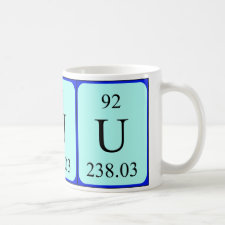
Authors: Zhou LM, Shang C, Liu ZR, Huang GL, Adesina AA
Article Title: Selective adsorption of uranium(VI) from aqueous solutions using the ion-imprinted magnetic chitosan resins.
Publication date: 2012
Journal: Journal of Colloid and Interface Science
Volume: 366
Issue: (1)
Page numbers: 165-172.
DOI: 10.1016/j.jcis.2011.09.069
Alternative URL: http://www.sciencedirect.com/science/article/pii/S0021979711012148
Abstract: The ion-imprinted magnetic chitosan resins (IMCR) prepared using U(VI) as a template and glutaraldehyde as a cross-linker showed higher adsorption capacity and selectivity for the U(VI) ions compared with the non-imprinted magnetic chitosan resins (NIMCR) without a template. The results showed that the adsorption of U(VI) on the magnetic chitosan resins was affected by the initial pH value, the initial U(VI) concentration, as well as the temperature. Both kinetics and thermodynamic parameters of the adsorption process were estimated. These data indicated an exothermic spontaneous adsorption process that kinetically followed the second-order adsorption process. Equilibrium experiments were fitted in Langmuir, Freundlich, and Dubinin-Radushkevich adsorption isotherm models to show very good fits with the Langmuir isotherm equation for the monolayer adsorption process. The monolayer adsorption capacity values of 187.26 mg/g for IMCR and 160.77 mg/g for NIMCR were very close to the maximum capacity values obtained at pH 5.0, temperature 298 K, adsorbent dose 50 mg, and contact time 3 h. The selectivity coefficient of uranyl ions and other metal ions on IMCR indicated an overall preference for uranyl ions. Furthermore, the IMCR could be regenerated through the desorption of the U(VI) ions using 0.5 M HNO3 solution and could be reused to adsorb again.
Template and target information: U(VI), uranyl ions
Author keywords: ion-imprinted, chitosan, Magnetic resins, adsorption, U(VI) ions



Join the Society for Molecular Imprinting

New items RSS feed
Sign-up for e-mail updates:
Choose between receiving an occasional newsletter or more frequent e-mail alerts.
Click here to go to the sign-up page.
Is your name elemental or peptidic? Enter your name and find out by clicking either of the buttons below!
Other products you may like:
 MIPdatabase
MIPdatabase









